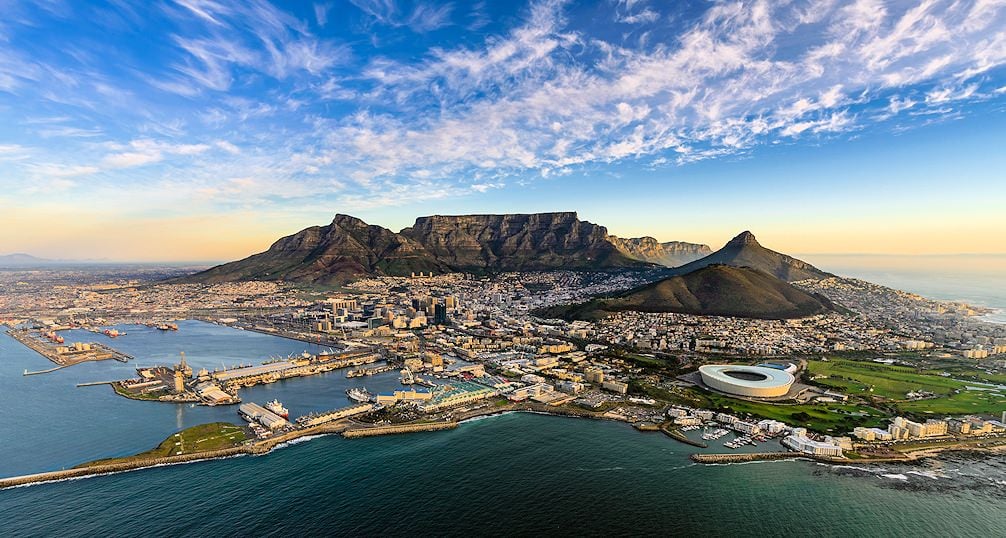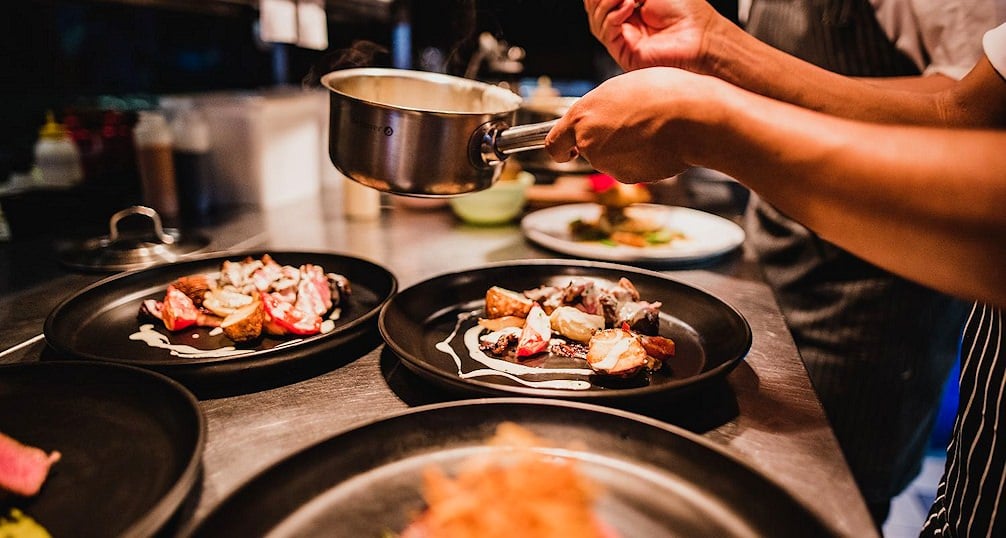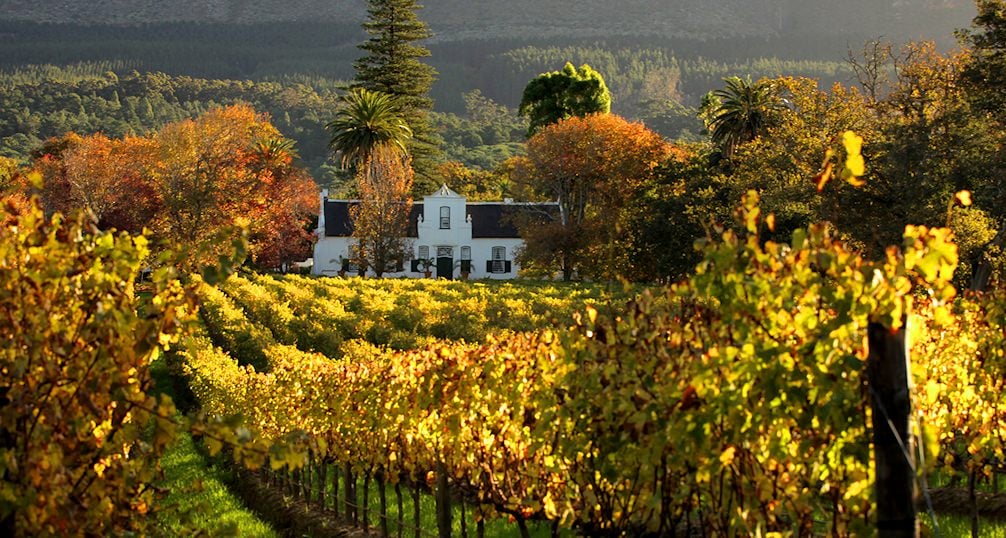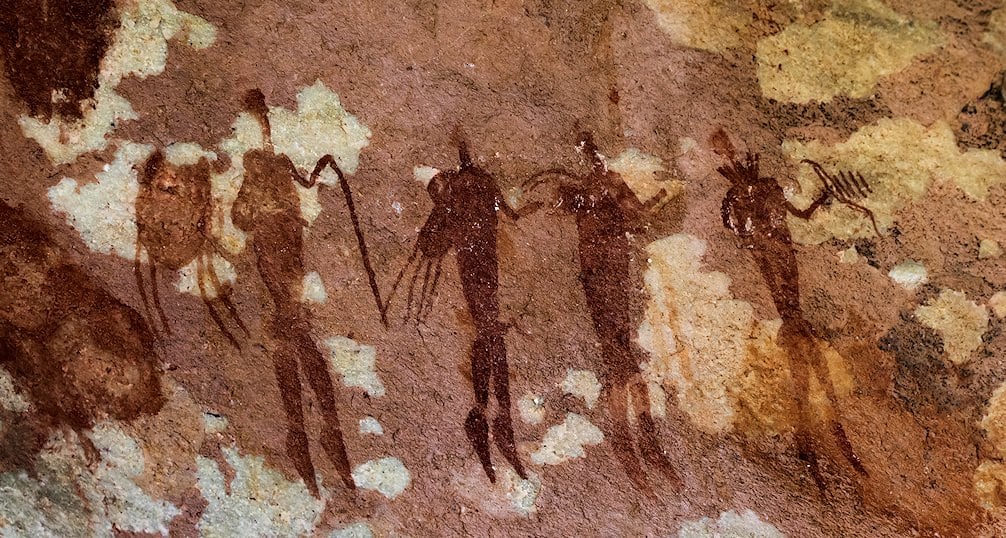Great South African Tour Ideas

South Africa offers diverse regions and cultures and a variety of tour options.
Whatever your interests, South Africa will likely have destinations and activities that appeal to your unique tastes. The country is a traveler's delight, from isolated wilderness areas to bustling cities and many exciting towns and villages.

The Fairest Cape - Tours of the Mother City
“...a most stately thing and the fairest cape we saw in the whole circumference of the earth.” - Sir Francis Drake, 18 July 1580
It’s become quite clear that any year is a good year to visit Cape Town. South Africa’s ‘Mother City’ never fails to earn a mention on the annual ‘best in travel’ lists. Most recently, Cape Town checked in at #2 on Lonely Planet’s Best in Travel 2017 - Top 10 Cities, made the cut for Travel + Leisure’s 50 Best Places to Travel to in 2017 (no particular order), came in at #9 on Harper’s Bazaar’s The 17 Best Places to Travel in 2017, placed 20th on TripAdvisor’s Top 25 Destinations in the World Travelers’ Choice Awards and enjoyed a comfortable 53rd position on The Conde Nast Traveler’s The Ultimate Travel Top 100 (with a score of 87.60/100), knocking out destinations like New York, Australia, Malta, Thailand, Edinburgh, Paris, Mexico, St Barth’s and New Zealand (SIDE NOTE: South Africa itself earned a score of 90.46, ranking 23rd on the list).
So what’s new in this ever-evolving bucket list destination? Well, the major hype is around last year's opening of the Zeitz Museum of Contemporary Art Africa (MOCAA), the world’s largest museum of contemporary African art and a post-industrial architectural marvel occupying a century-old grain silo. The museum, heralded as South Africa’s answer to the MoMA or the Tate Modern, has cemented the city’s status as a cultural mecca. The upper parts of the historic silo have been converted into The Silo Hotel, an ultra-luxurious address which has become the flagship property of The Royal Portfolio. The unique 28-room accommodation enjoys prime waterfront real estate and opened just last year.
In the meantime, a wealth of fine hotels and guest houses continue to bend over backwards for guests to our shores. The exclusive Ellerman House, an exceptionally-managed boutique hotel, made it onto The Conde Nast Traveler 2017 Gold List: The 20 Best Hotels in the World, as well as enjoying a nod in Cape Town’s above-mentioned entry on Harper’s Bazaar’s list. The Ellerman House team is as attentive to guests’ needs as ever and blessed with an enviable Bantry Bay view.
On the more moderate end of the spectrum, another Cape Town property that continues to impress on an international plane is 2inn1Kensington, a personal boutique hotel tucked away in Gardens in the heart of the city. The stylish property is a firm favorite amongst TripAdvisor users, earning the rank of #16 on the Travelers’ Choice World’s Top 25 Small Hotels, as well as #24 on the Travelers’ Choice World’s Most Romantic Hotels. Guests can expect an intimate setting and impeccable service at astonishingly affordable rates.
If it’s your first trip to Cape Town, there are a few “don’t miss” activities; Table Mountain (cable car round-trip or hike – both are wonderfully exciting!), the ferry trip to and tour of Robben Island, and exploring the circumference of the Cape Peninsula (including stops at Boulders Beach, the Cape of Good Hope Nature Reserve and driving along Chapman’s Peak). If it’s your second or third trip, you may even wish to revisit these much-loved destinations. We typically recommend a minimum of three nights in Cape Town, but would never impose a ‘maximum’ - there really is so much to do and enjoy.
Major 2018 events to look out for, include the ever-popular Kirstenbosch Summer Sunset Concerts (held every Sunday from 23 December 2017 to 1 April 2018), the Cape Town Art Fair (16 -18 February), Cape Town Carnival (17 March), and the Cape Town International Jazz Festival (23 to 24 March).

Culinary Culture - South African Food Tours
“There is no love sincerer than the love of food.” ― George Bernard Shaw
South Africa is no longer an up-and-coming culinary destination – it is an established one. Yes, the secret is quite out. Cape Town’s The Test Kitchen has enjoyed a steady climb amongst the world’s best restaurants, checking in at #22 on the list of the World’s 50 Best Restaurant in 2016 (6 positions up from the previous year’s #28). Constantia’s La Colombe has bounced up to #76 on the list, while maintaining a two-position lead over The Test Kitchen as #20 on TripAdvisor’s Top Restaurants – Traveler’s Choice Awards.
The culinary mastermind behind The Test Kitchen – Chef Luke-Dale Roberts – has now extended his gastronomic genius to Johannesburg, with Luke Dale Roberts X the Saxon. The Saxon is the finest hotel in South Africa’s “richest square mile”, and Dale-Roberts’s novel offering certainly augments the status of this already highly lauded property. So much so, in fact, that Luke Dale Roberts X the Saxon has already garnered itself a World’s Leading Fine Dining Hotel Restaurant at the World Travel Awards.
Beyond the inherent vibrancy of Cape Town and the cityscape hustle and bustle of Johannesburg, South Africa’s other fine dining institutions are countryside establishments. The vast majority of these are wine country staples tucked away amidst the rolling valleys and mountains of Franschhoek, Stellenbosch and Somerset West, where you really can’t go wrong. However, a unique offering exists around an hour’s drive from the capital city of Pretoria, in a peculiarly remote setting. Restaurant Mosaic at the Orient is set on the Francolin Conservancy in the Crocodile River Valley of the Magaliesberg region. The entire experience is one of playful decadence, and it is worth spending the night for the full experience.
Culinary experiences need not be limited to fine dining, however. A prolific market culture has erupted across South Africa, presenting the public with some of the tastiest, most wholesome and unique fare imaginable. The most popular of these is the Neighborhoods Market, of which there are two – one in Johannesburg and one in Cape Town.
Held every Saturday in both cities, these markets have become established melting pots of specialty foods and platforms for emerging artisans. This is the type of event that you make an entire morning of. Get there early before the good stuff sells out – odds are that you’ll be competing more with local regulars than with fellow travelers!
If you’re looking for something quieter than Neighborhoods in the Cape Town area, many avid market-goers have begun migrating to the Bay Harbor Market in Hout Bay, which operates on both Saturdays and Sundays. Sundays tend to be more relaxed – you’ll likely be able to find a seat, so that you can sit down and enjoy your jalapeño poppers / gourmet lamb burger / homemade milk tart / sushi (rather than standing awkwardly in the crowd and spilling over yourself). Whichever market you elect to visit, you’ll find that most offerings have an inherently local element. These markets are aimed at locals rather than tourists – which is exactly why you should visit them over commercial institutions at the Victoria & Alfred Waterfront and Greenmarket Square. You’ll certainly find a lot more authenticity and a fantastic atmosphere.

Of award-winning vintages and other delicacies - Celebrations in the Winelands
“Drinking good wine with good food in good company is one of life’s most civilized pleasures.” - Michael Broadbent
The Boland really is a year-round destination for a South African tour. During the winter months, you can cozy up to the fireplace of a tasting room at a world-class wine estate, sip on full-bodied reds and relish delicious fare to complement the bouquet. Summer sees the jubilation of the harvest season, with a series of colorful festivals, fruit-picking and balmy weather. What may augment a trip to the Winelands is visiting during such a festival, of which there are many throughout the year.
The most significant summer events are the Stellenbosch Harvest Parade (end of January), Franschhoek Summer Wines (early February) and the Stellenbosch Wine Festival (end of February). These are your quintessential, straightforward Winelands festivals, focused on the celebration of and an appreciation for the Wineland’s finest many ambrosial cultivars and award-winning estates.
While most of the key wine-oriented festivals and harvest parades occur in the summer, autumn and winter see more niche festivals like the South African Cheese Festival (end of April), the Franschhoek Literary Festival (mid-May), the Bastille Day Festival in Franschhoek (mid-July) and the Winelands Chocolate Festival (end of August).
The South African Cheese Festival is hosted annually at the Sandringham Estate outside Stellenbosch during the last weekend of April. Not only can visitors can expect an extraordinary variety of locally produced cheeses, but also a sampling of the region’s finest wines, fresh fruit, homemade preserves and snacks. Beyond the gastronomic delights available, festive activities like a cheese-carving competition, demonstrations of tasty dishes made with cheese and alternative niche products and talented local musicians and bands.
The Franschhoek Literary Festival – held during the third weekend of May - is a celebration of books and writers that is very popular amongst local bibliophiles and authors. If you harbor a deep interest in local South African culture, current affairs and African writers, you may find this festival incredibly rewarding. The festival is sponsored by Boekenhoutskloof – one of the finest wine estates in the region – and although the focus of the festival may not be on culinary exploits or wine appreciation, you’ll find that, no matter when you visit, you cannot separate Franschhoek from these elements. They are as part of the town as the Huguenot Memorial.
Speaking of, Franschhoek’s annual Bastille Festival is essentially an homage to the town’s French Huguenot founders. Typically, celebrated the weekend closest to France’s National Day (14 July), you’ll find the town awash in red, blue and white, with marching bands reverberating down the streets. The main drawing card is the festival’s Food and Wine Marquee, where you can enjoy the most beguiling blend of local and French flavors. You’ll encounter stalls from all the finest local wine estates (e.g. La Motte, Rupert & Rothschild, Haute Cabrière) and the most celebrated Franschhoek eateries (including Foliage, Grande Provence and Reuben’s).
The Winelands Chocolate Festival (last weekend of August) is altogether characterized by indulgence. The event markets itself as a celebration of South Africa’s best loved chocolatiers, pastry chefs, cake and sugar-craft artists. It is not particularly aimed at young candy lovers, but more adult connoisseurs of the delectable cocoa craft. Hosted at the Stellenbosch Wine Route’s esteemed Blaauwklippen Estate, visitors can expect a ‘Chocolate Theater’ (chocolate demo's, tutored brandy, whiskey and bubbly tastings, chocolate and wine pairing experiences and Lindt chocolate afternoon tea sessions) chocolate exhibitions and competitions including extraordinary chocolate sculptures and, for ‘taking home’, the chocolate emporium.
There is typically always something happening in the Winelands, so if you are after a bit more excitement during your visit, be sure to check the calendar beforehand.

Blast from the Past - Archaeological Tours in South Africa
"All of humanity shares an African heritage. We are one, diverse species across the globe, with our roots in Africa." – Written on a wall at the Cradle of Humankind’s Maropeng Visitor Center.
While you are unlikely to make any grand, historical discoveries of your own, touring South Africa’s remarkable archaeological sites is sure to be an enlightening and rewarding experience nevertheless. This is, after all, the ‘cradle of humankind’, where Homo sapiens, now spread across the continents of the world, can trace its ancient origins to.
The UNESCO World Heritage Site known as “The Cradle of Humankind” is listed under National Geographic’s Best Trips of 2017. The 47 000-hectare site is a mere hour’s drive from South Africa’s capital city, Pretoria, and the sprawling metropolis of Johannesburg. Perhaps not surprisingly, it is not far from some of the oldest mountains in the world – the Magaliesberg Mountains, almost 100 times older than Everest. Though not nearly as impressive to behold, these prehistoric mountains harbor an intrinsically venerable (and scenic) element nonetheless.
The site’s key attractions are the Sterkfontein Caves, where the most significant excavations have taken place, and the Maropeng Visitors Center, which offers fascinating insight regarding not only the fossils and artifacts discovered, but the early history of our extraordinary planet (and some warnings concerning its future).
The center is very much family-oriented, to ensure that the younger generation will engage with and take away important and amazing facts. Highlights include a short but exciting boat trip introducing visitors to the elements – wind, water, fire and earth – and the roles that they played in forming our planet as we know it today, a bridge that may unnerve you with its startling optical illusion, and, of course, exhibits about the fossils found in the Cradle area, an introduction to DNA and evolution, diversity, extinction, studying fossils, prehistoric animals, etc.
The highlight for most visitors (save the claustrophobic) is the descent into the Sterkfontein Caves, which may be enjoyed prior to or after your visit to the Visitors Center. The caves are currently owned by the University of the Witwatersrand, whose scientists have been responsible for the main excavations of the World Heritage Site. They are credited with many of the most significant discoveries, including the world-famous “Mrs Ples” (a 2.1-million-year-old Australopithecus skull) and “Little Foot” (an almost complete Australopithecus skeleton dating back more than 3 million years).
A specialist guide will highlight the excavation stories and other fascinating artifacts found at nearby sites Swartkrans and Kromdraai (including 2-million-year-old stone tools and some animal fossils), as well as the various unique formations within these sprawling limestone caves. Beyond the extraordinary facts presented, the tour is an adventure in itself - requiring a bit of clambering and squeezing on occasion! The pitch-dark underwater lake is one of the more eerie sights, and where a scuba diver lost his life attempting to discover its depth back in 1984.
The Cradle is by no means South Africa’s only archaeological drawing card. Take a look at our 10-Day South African Rock Art Tour for an exquisite exploration of the country’s most noteworthy (accessible) rock art sites, from the awe-inspiring peaks of the Drakensberg Mountains in KwaZulu-Natal to the otherworldly landscape of the Cederberg in the Western Cape.
Such South African tours have become increasingly popular (rather than niche), it is plain in the fact the Cederberg’s Bushmans Kloof Wilderness Reserve – the site of more than 130 unique rock art sites – ranks #20 on The Conde Nast Traveler’s THE ULTIMATE TRAVEL TOP 100 from the Readers' Travel Awards, with an overall score of 90.96 / 100.









